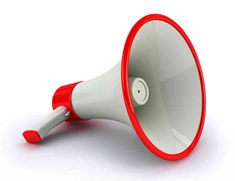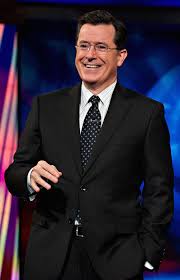 Consumers are being bombarded by advertising and marketing messages like never before. Unless you’re Donald Trump, chances are good that getting your message across has become a more arduous task over time. The increasing noise, reliance on smartphones, connections to social media, and overall exposure to messaging and marketing makes it easy to miss some of the great things radio stations are doing.
Consumers are being bombarded by advertising and marketing messages like never before. Unless you’re Donald Trump, chances are good that getting your message across has become a more arduous task over time. The increasing noise, reliance on smartphones, connections to social media, and overall exposure to messaging and marketing makes it easy to miss some of the great things radio stations are doing.
We hear this all the time in focus groups and even Listener Advisory Board panels. Fans of stations aren’t always aware of some of the features, specials, and contests that are on the air.
But it’s one thing for a restaurant to not communicate that it’s Taco Tuesday, or an airline to miss the mark on its January Cheap Fare special. Promotion and marketing can be costly.
It’s another for a strong media outlet – like a successful radio station – to fail to connect its audience to a new feature, special, event, the new mobile app, a shift in the on-air lineup, or a giveaway. That’s because of the megaphone – a station’s cume and overall influence on audiences.
Advertisers continue to find radio an effective tool for hawking just about any product or service. Problem is, many radio stations don’t treat their own content like they do client messages. Sadly in radio, advertisers often get better exposure than the station itself. Like the old saying, “the shoemaker’s kids go barefoot,” stations often fail to deploy their talent and best resources to communicate key benefits.
We monitor a lot of radio stations throughout the course of a year, and I can tell you that a common deficit is failing to use the morning team or a station’s biggest personality show to help market the rest of the station’s lineup or offerings.
That’s why it’s important to watch how TV handles its biggest priorities. In the NFC Championship game a couple weeks back, Fox used its “inventory effectively.” The game drew more than 40 million viewers even though it turned out to be a blowout. But the real variable for Fox is what they scheduled after the game, and how it performed. They chose the premier of their X-Files resurrection. And the ratings were strong. Its first half hour (starting at 10:30 ET) drew well more than 13 million viewers.
And for Super Bowl 50, CBS has the chance to use what is perhaps the greatest lead-in show on the planet to either promote something new or something that needs help.
 In this case, it’s the latter. The show that millions of viewers will see after the clock runs out and the Super Bowl trophy is handed out will be The Late Show with Stephen Colbert, which has suffered in the ratings.
In this case, it’s the latter. The show that millions of viewers will see after the clock runs out and the Super Bowl trophy is handed out will be The Late Show with Stephen Colbert, which has suffered in the ratings.
Colbert told AdWeek the Super Bowl lead-in is “10 times our audience, and I want people to see an indicative show because I really like our show.” Guests include Tiny Fey and Will Farrell.
Les Moonves isn’t just about selling out the Big Game’s inventory. The other shoe is the Super Bowl’s mega-megaphone power to move viewers to what’s the next big thing on the network. And whether Colbert ultimately proves to be a big hit or not, CBS will leave nothing to chance, pulling out the stops, and making sure it puts its full weight behind The Late Show.
So why doesn’t radio make better use of its biggest performers – in most cases, its morning shows – to strongly promote its new offerings? It’s one thing to slot in produced promos in a.m. drive shows. But the key is to get that same live read that Sleep Train or the Shane Company receive morning after morning to promote a station’s key priorities.
Whether it’s a contest, introducing a new DJ, launching a community service campaign, or anything else, many stations simply don’t take advantage of their best daypart to get their messaging across.
Too often in radio, cross-promotion is left to chance. And in the busy, hectic craziness that characterizes a big morning show, the megaphone often collects dust through lack of use. Treating a station’s “products” like a key account on the station is the first step in truly reaping the power and pull of a great show.
Rethinking radio’s promotional efforts in a strategic light – the same way TV and agencies approach this – becomes even more important in an environment where that Film House TV campaign hasn’t been in the budget for more than a decade. In many cases, programmers have stopped asking for marketing money because it won’t happen.
But that shouldn’t stop them from building and executing smart, savvy strategic on-air marketing campaigns using their biggest weapons.
Their megaphones.
- What To Do If Your Radio Station Goes Through A Midlife Crisis - April 25, 2025
- A 2020 Lesson?It Could All Be Gone In A Flash - April 24, 2025
- How AI Can Give Radio Personalities More…PERSONALITY - April 23, 2025




Amen! It’s the Fear of Flying that plagues radio’s “Don’t Rock The Boat” culture. Creative cuts, cover your ass, defense not offense, kiss up. Very sad when timely, no-cost ideas are rebuffed. Lack of imagination screws the pooch. Inspire, connect, use the Force and win! Thanks, Fred. Boomers Rock! Clark http://www.broadcastideas.com
Thanks, Clark!